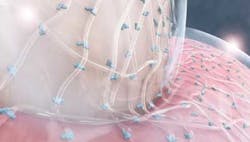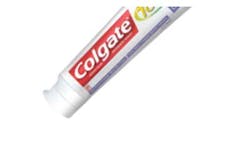The debate rages on – triclosan/copolymer: debunking the myths
There have been claims in the news lately that triclosan is unsafe for humans. As with any product, toxicity is determined by the dosage, and the amount of potentially toxic ingredients in a product. This article discusses the efficacy of dentifrices containing triclosan, and the fact that there is currently not enough evidence to recommend avoiding use of products that contain triclosan.
Triclosan is a broad-spectrum antibacterial agent with anti-inflammatory properties. It is compatible with ingredients of oral care products, and has a long history of safe use. There have been no concerns with staining, calculus, or taste disturbance, and there are over 90 clinical studies that support the safety and efficacy of dentifrice with 0.3% triclosan and 2% copolymer.
The primary site of antibacterial action of triclosan is the bacterial membrane.(1) The mode of action is the modification of structure and function, with disaggregation of the cell wall and leakage of cellular contents.(2) It also inhibits uptake of essential amino acids into the cell. Triclosan has an anti-inflammatory action, with an effect on inflammatory mediators, including suppression of microbial-pathogen recognition pathway molecules, and the suppression of acute and chronic mediators of inflammation.(3)
As mentioned, professionals and consumers have been exposed to negative reports about potential risks associated with triclosan, and are asking whether triclosan-containing dentifrice is a safe choice. There is an extensive amount of published data examining the potential toxicity of triclosan use, and documenting the short-term and long-term effects of exposure to triclosan. In order to become familiar with published safety information about triclosan, read this recently published review that is very thorough.(7) We should be able to discuss these issues with our patients in an evidence-based, non-emotional manner. Discussions should include details such as species-specific findings related to endocrine disruption, tumour formation and muscle function associated with triclosan exposure; the effects of triclosan on antimicrobial resistance; and important safety information regarding use of triclosan-containing dentifrice.
In summary, studies in humans show that by following normal use of triclosan-containing dentifrice, triclosan does not accumulate in the blood or body tissues, and no adverse systemic effects have been documented following long-term use of triclosan dentifrice. Even when brushing three times per day with full ingestion of the product, triclosan is completely eliminated from the body, mainly through excretion in the urine.
In humans, the margin of safety of triclosan is very high. Triclosan-containing personal care products are appropriate for use when there is a discernible human health benefit, as is the case with use of triclosan-containing dentifrice for the reduction of supragingival plaque and gingivitis. Oral health professionals should feel confident in recommending use of triclosan-containing oral care products to their patients and families. According to the Mayo Clinic, there is currently no evidence to recommend avoiding use of products that contain triclosan.(8)
Maria Perno Goldie, RDH, MS, is the editorial director of RDH eVillage FOCUS.
All photos courtesy of Colgate.
References
1. Panagakos FS, Volpe AR, Petrone ME, et al. Advanced oral antibacterial/anti-inflammatory technology: A comprehensive review of the clinical benefits of a triclosan/copolymer/fluoride dentifrice. J Clin Dent. 2005; 16 Suppl: S1-19. http://www.ncbi.nlm.nih.gov/pubmed?Db=pubmed&Cmd=ShowDetailView&TermToSearch=16583598&ordinalpos=1&itool=EntrezSystem2.PEntrez.Pubmed.Pubmed_ResultsPanel.Pubmed_RVDocSum.
2. Gaffar A, Scherl D, Afflitto J, Coleman EJ. The effect of triclosan on mediators of gingival inflammation. J Clin Periodontol. 1995; 22:480–4. http://www.ncbi.nlm.nih.gov/pubmed/7560228.
3. Barros SP, Wirojchanasak S, Barrow DA, et al. Triclosan inhibition of acute and chronic inflammatory gene pathways. J Clin Periodontol. 2010; 37:412–8. http://www.ncbi.nlm.nih.gov/pubmed/20507366.
4. Adams SE, Theobald AJ, Jones NM, et al. The effect of a toothpaste containing 2% zinc citrate and 0.3% Triclosan on bacterial viability and plaque growth in vivo compared to a toothpaste containing 0.3% Triclosan and 2% copolymer. International Dental Journal, Volume 53, Issue S6P1, pages 398–403, December 2003.
5. Gunsolley JC. A meta-analysis of six-month studies of antiplaque and antigingivitis agents. J Am Dent Assoc 2006; 127: 1649-1657.
6. Garcia RI. Mouthrinses and dentifrices are effective antigingivitis and antiplaque agents. J Evid Based Dent Pract. Mar 2008; 8(1): 13–14.
7. Spolarich A. Triclosan Safety Exposed.http://www.colgateoralhealthnetwork.com/articleupfile/1978.html.
8. Steckelberg JM, Should I avoid products that contain triclosan? Mayo Clinic. Healthy Lifestyle, Adult health. http://www.mayoclinic.org/healthy-living/adult-health/expert-answers/triclosan/faq-20057861.




